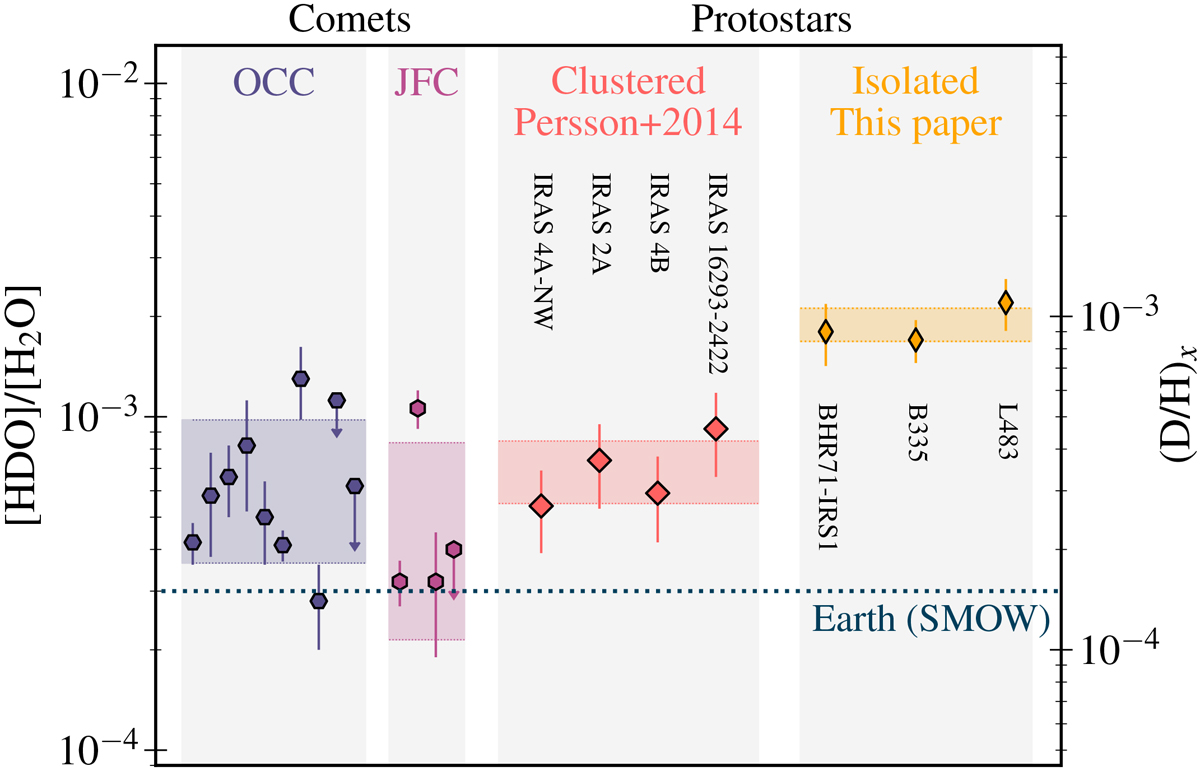Fig. 4

Comparison between the D/H ratio and HDO/H2O ratio for comets in the Solar System and hot corino observations toward Class 0 protostars. Values for IRAS 16293–2422, IRAS 2A, and IRAS 4B are from Persson et al. (2014), while IRAS 4A–NW has been adjusted from the value quoted in the paper as a mistake in the data analysis was discovered, which enhanced the HDO abundance by a factor of ~2. Errorbars show 1σ uncertainties. For the isolated sources the uncertainty is based on statistical errors from the fitted Gaussian profiles and a flux calibration uncertainty of 10%. On the right axis the corresponding D/H ratio is shown. The references for the Oort Cloud Comets (OCC) and Jupiter Family Comets (JFC) can be found in Appendix A. The colored regions show the standard deviation for each class of objects. Note that the HDO/H2O ratio for the protostars are derived from observations of HDO and H![]() O while some cometary values are derived from other proxies for the D/H ratio.
O while some cometary values are derived from other proxies for the D/H ratio.
Current usage metrics show cumulative count of Article Views (full-text article views including HTML views, PDF and ePub downloads, according to the available data) and Abstracts Views on Vision4Press platform.
Data correspond to usage on the plateform after 2015. The current usage metrics is available 48-96 hours after online publication and is updated daily on week days.
Initial download of the metrics may take a while.


